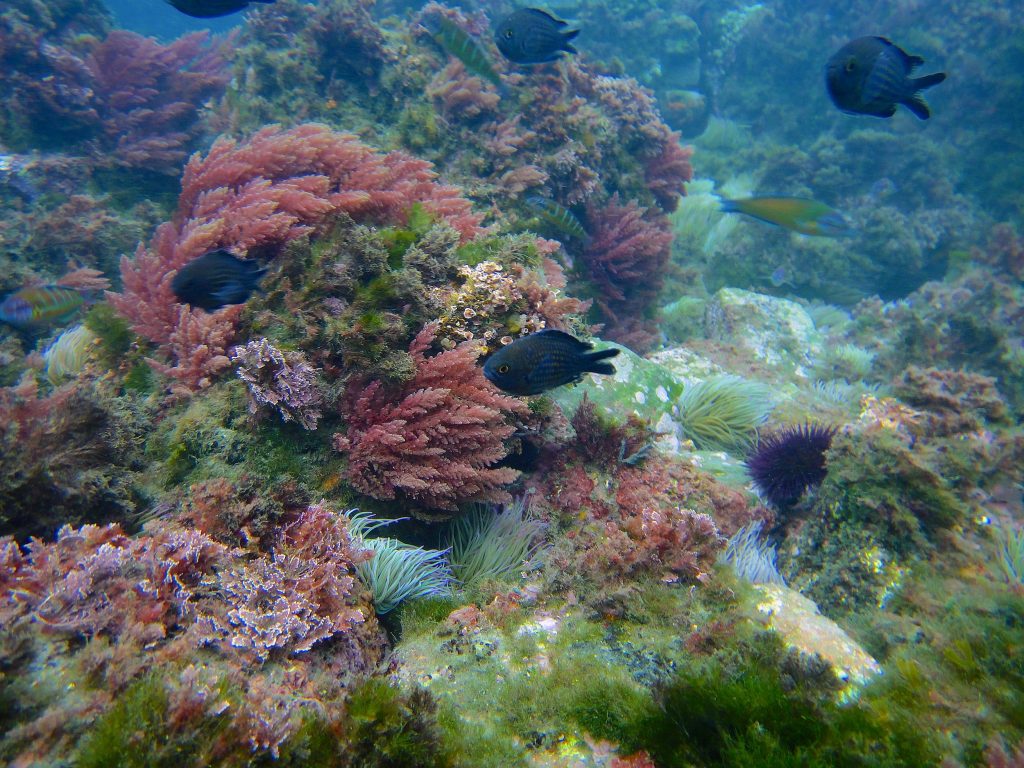Long-term monitoring of wildlife populations
Our group explores the influence of endogenous population processes and exogenous stochastic forces driving wildlife population dynamics.
We use an empirical approach by monitoring individual and population data in the field for studying the behavior of populations at spatial and temporal scales.
The analysis of these long-term data allow us to test hypothesis and theories about complex responses of individuals and populations, such as life-history strategies and non-linear dynamics.
Our monitoring focuses on seabirds and waterbirds breeding in Mediterranean coastal habitats.


During the last three decades, we have been recording population density and demographic traits for gulls, shearwaters and terns at several sites including the Balearic Islands and the coastline of eastern Iberia.
We individually mark animals in the field and build capture-recapture models for estimating traits like survival, recruitment and dispersal between populations.
The ultimate interest is to assess how the temporal variability of these traits influence for instance individual life histories (e.g. evolutionary trade-offs) and population processes such as density-dependence and transient phenomena.
Our main study species are the Audouin’s gull and the Cory’s shearwater.

Audouin's gull
The Audouin’s gull is a long-lived, bet-hedger social species that evolved in ephemeral habitats. We have been monitoring Audouin’s gulls since 1988, with ca. 59 000 marked birds and more than 65 000 resightings at different patches in the western Mediterranean.

Cory's shearwater
The Cory’s shearwater is also a long-lived species but has a much slower life history, adapted to very stable environments.
The two species suffer from anthropogenic impacts, mainly additive mortality by accidental captures in fisheries (bycatch). We have developed a mobile application for citizen-science data collection on bycatch that can be downloaded here.
We use this information to build population models able to predict probabilities of extinction under different scenarios and to apply adaptive management based on scientific evidence for conservation of vulnerable species.
We also analyze datasets and test ecological hypotheses on many other species collected by colleagues and interested in the same themes.
Among these species are tortoises, turtles, dormouse, bears, dolphins and trouts.
Quantitative behavior in model organisms
Our group has recently developed a research line to answer fundamental questions in behavioural and spatial ecology, at both individual and population level, using model organisms like ants (Aphaenogaster senilis), nematodes (Caenorhabditis elegans), small-bodied aquatic organisms (e.g. Tanaids, sea urchins) and open field models (e.g. Pyrenean brown cows, Iberian hounds). Most of these organisms can be behaviourally conditioned through environmental manipulations or even controlled internally (mutants) enabling frontier ecology and novel phenotype screening of model organisms. This research is associated to novel experimentation infrastructures at LEOV (Experimental Laboratory for Living Organisms) consisting on two High-Performance tracking platforms to generate big behavioural data based on postural images and high-resolution tracks.

Invasive Mosquitoes and Vector-Borne Diseases
Some of the most threatening diseases worldwide are transmitted by mosquitoes. This is the case of Dengue, Zika and Chikungunya, diseases that place enormous health and economic burdens on society and for which vaccines are not viable solutions yet.
To reduce health risks in areas where the vectors (mosquitoes) are present, it is important to understand how isolated cases can lead to epidemics.
However, the heterogeneous spatio-temporal distribution of disease risk is not a simple function of human and mosquito population densities.
Instead, it depends also on human mobility patterns, outdoor activities, water-use, built environment, and socio-economic conditions.
In our group, we work with different data sources including a citizen science program Mosquito Alert, to approximate human-mosquito mixing-bitting patterns as a way to better determine heterogeneous disease epidemic risk over different spatial scales: state, city or neighborhood.
Marine benthic communities
Historically, coastal areas have provided numerous ecosystem services for societies to thrive.
Since early history, coastal settlements have impacted marine littoral communities to the point of being among the most threatened communities in the world.
Degradation of marine littoral communities is likely to exacerbate with increasing population density trends in coastal areas, and predictions pointing to over 75% of the total human population living in coastal regions in a few years.

Our group investigates and helps preserve these productive and diverse coastal ecosystems.
We aim to create a predictive understanding of the biodiversity responses of marine littoral communities to climate change.
We use extensive natural observations inside and outside marine protected areas to set and test our hypotheses. We believe taking humans out of the ecological systems offers little chances to obtain meaningful environmental solutions. With our approach, we provide social, environmental, and biodiversity data to maximize the resilience of the coastal marine social-ecological systems. You can learn more about our research on the webpage of the BITES lab of Mikel Becerro, the leader of this research team.

